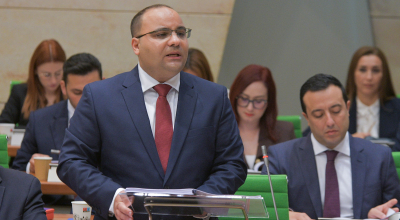66 hours a year spent in traffic just on Birkirkara Bypass
Using the Birkirkara Bypass at peak hours every weekday will take up an average of eight extra minutes in each direction every day, resulting in approximately 66 hours of delay in a year

Spending time in traffic on the Birkirkara Bypass everyday could take up to 66 hours a year.
A study carried out by Project Aegle revealed that people travelling by car spent an average of 66 hours a year more than they should when using Triq Dun Karm on a daily basis.
The project used real time data collected during January 2017 and October 2017.
Aegle calculated the typical spent to drive from one end to the other of the Birkirkara bypass, which covers a stretch of approximately 3.0km, every 30 minutes.

While the normal time was of around four minutes, this increases significantly to 14 minutes during the morning in January with almost similar delays of 12.5 minutes in the evening. In October, this increases further to 16 minutes during morning rush hour and 15 minutes in the evening.
Using this road at this time every weekday will take up an average of eight minutes in each direction every day, resulting in approximately 66 hours of delay. This adds up to approximately three full days every year spent just on this road.
Nicoletta Moss Project Coordinator of Project Aegle said that this study was carried out to raise awareness of the real time that people are wasting in traffic based on facts and real data, and not just basing it on perceptions.
“Project Aegle was set up to contribute towards a solution for Malta’s traffic congestion problem,” Moss said.
“We believe that this study is critical in helping us understand the magnitude of the problem of how much time we waste in traffic as this has an effect on our quality of life, and on our economy.”
The study was coordinated by Prof. Adrian Muscat, University of Malta, Faculty of Information and Communications Technology, and collaborator within Project Aegle.
“This is part of an on-going project where we are looking at how ICT systems can help us in understanding mobility, driver behaviour and the effect of policy on the same,” Muscat said.
“Concurrently this project is resulting in some useful tools and since we are engaging students, engineers and researchers in developing algorithms and software systems for the transport sector, we are contributing to a wider local transport engineering talent pool, which we need to mitigate some of our problems.”
The study took place using on-board tracking devices in conjunction with HandsOn Systems. These devices recorded the movement of the vehicles over time travelling on this specific road between the 16 and 20 January 2017, and between the 16 and 20 October 2017. This enabled the researchers within Project Aegle to accurately measure the delays experienced at different times of the day and during different months of the year.














.jpeg)



.png)




